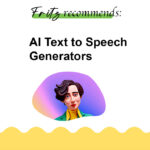Artificial Intelligence (AI) is revolutionizing various fields, and the art world is no exception. AI is changing how we understand and produce art, from generating intricate line drawings to creating lifelike images. We explore the captivating realm of ai artworks, delving into its history, the technology behind it, and its profound impact on the art world.
Evolution of AI Artworks
The history of AI art dates back several decades, but it has only recently gained significant traction. Early experiments involved simple algorithmic drawings, but machine learning and neural network advancements have elevated AI’s capabilities to produce complex and stunning artworks. Techniques such as Generative Adversarial Networks (GANs) and Deep Learning are at the forefront of this evolution.
GANs, for example, use two neural networks that compete against each other to create highly realistic images. This method has been pivotal in creating AI images, allowing artists to produce previously unimaginable works.
Human vs. Machine: The Art Debate
The advent of AI artworks has sparked a vibrant debate about the nature of art and creativity. Traditionalists argue that art is inherently a human endeavor driven by emotion, intention, and creativity. They question whether AI-generated works, which rely on algorithms and data, can be considered original or creative.
Conversely, proponents of AI art believe that creativity is not exclusive to humans. They see AI as a new medium, much like photography or digital art, that can expand the boundaries of artistic expression. Artists collaborating with AI often view it as a partner that generates novel ideas and compositions, enhancing creativity.
This debate encompasses a range of perspectives. Critics worry that AI could devalue human creativity, while others see it as an inspiration for new artistic forms. Artists using platforms like PicLumen, known for its innovative AI-generated artworks, find that AI enriches their creative process, allowing them to explore new artistic realms.
The Impact of AI on Future Art
AI is poised to continue significantly shaping the future of art. AI technology will integrate more into artistic practices, leading to innovative collaborations between artists and machines. These partnerships could result in hybrid artworks that merge human creativity with AI’s computational power.
However, the rise of AI art also raises ethical questions. Issues such as authorship, authenticity, and the potential for AI to replicate or plagiarize existing works must be addressed. The art market may face challenges in determining the value and originality of ai generator pieces.
Despite these challenges, AI’s potential to inspire and transform art is immense. It can democratize art creation, allowing individuals without formal training to produce compelling artworks. Additionally, AI can help preserve cultural heritage by generating digital reconstructions of lost or damaged art.
Conclusion
AI undeniably transforms the art world, offering new possibilities for creation and expression. AI art is a dynamic and exciting field, from its historical evolution to its current impact and future potential. While the debate over AI’s role in art will continue, it is clear that AI is here to stay, influencing and reshaping the landscape of art.
As we navigate this evolving landscape, engaging with AI artworks, exploring their potential, and considering their implications is essential. The future of art promises to be a blend of human creativity and machine intelligence, pushing the boundaries of what is possible in the world of art. Embrace this new era, discover the fascinating world of AI-generated art with platforms like PicLumen, and see how AI images can transform your understanding of creativity.

